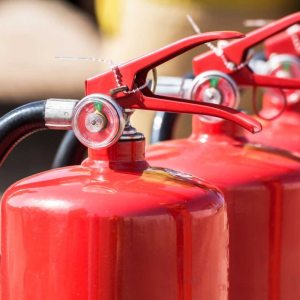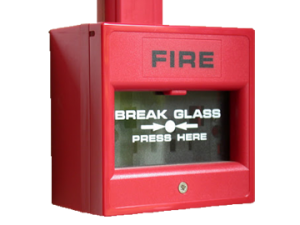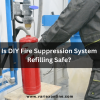Fire safety is paramount in both residential and commercial settings. Having the right fire fighting equipment on hand can make the difference between a manageable situation and a catastrophic disaster. In this comprehensive guide, we'll outline the essential fire fighting equipment every home, workplace, or public facility should have to ensure preparedness and effective response in case of a fire emergency.
Fire Extinguishers:
- ABC Dry Chemical Fire Extinguisher: Effective for combating fires involving ordinary combustibles, flammable liquids, and electrical equipment.
- CO2 Fire Extinguisher: Ideal for electrical fires and flammable liquid fires as it leaves no residue and doesn't conduct electricity.
- Water Mist Fire Extinguisher: Suitable for Class A fires (ordinary combustibles) and Class C fires (electrical equipment) as it cools the fire while minimizing water damage.
- Foam Fire Extinguisher: Effective against flammable liquids and can also create a barrier to prevent re-ignition.
- Class K Fire Extinguisher: Specifically designed for commercial kitchens to combat cooking oil fires.
Fire Hose and Nozzles:
- Fire Hoses: Durable hoses designed to deliver high-pressure water or foam to extinguish fires.
- Nozzles: Adjustable nozzles that allow firefighters to control the direction and flow rate of the water or foam.
Fire Blankets:
- Fire-resistant blankets used to smother small fires or wrap around a person to shield them while evacuating a burning area.
Fire Sprinkler Systems:
- Automatic sprinkler systems designed to detect and extinguish fires in their early stages, minimizing property damage and risk to occupants.

Fire Alarms and Smoke Detectors:
- Smoke Detectors: Devices that detect smoke particles and emit a loud alarm to alert occupants of a potential fire.
- Fire Alarms: Systems that combine smoke detection with audible and visual alerts to notify occupants and emergency services.
Fire Escape Ladders:
- Portable ladders designed for emergency escape from upper floors of buildings when traditional exits are blocked by fire.
Fire Hydrants and Water Sources:
- Fire Hydrants: Access points connected to municipal water supplies to provide firefighters with a readily available water source.
- Water Tanks or Ponds: Backup water sources for areas lacking hydrant access.
Personal Protective Equipment (PPE):
- Firefighter Gear: Including helmets, gloves, turnout gear, and breathing apparatus to protect firefighters from heat, smoke, and hazardous materials.
- Fire Escape Masks: Respiratory masks for occupants to use during evacuation to filter smoke and toxic gases.
Conclusion
Investing in the right fire fighting equipment is crucial for ensuring the safety of occupants and minimizing property damage in the event of a fire emergency. By having a comprehensive array of tools including fire extinguishers, hoses, alarms, and personal protective equipment, individuals and organizations can effectively prevent, detect, and combat fires, ultimately saving lives and property. Regular maintenance, training, and adherence to fire safety protocols are also essential to maximize the effectiveness of these firefighting resources.
Frequently Asked Questions
Q: What types of fire extinguishers should be included in a fire fighting equipment list?
A fire fighting equipment list should include various types of fire extinguishers suitable for different classes of fires. These may include ABC dry chemical extinguishers, CO2 extinguishers, water mist extinguishers, foam extinguishers, and Class K extinguishers for kitchen fires.
Q: How often should fire extinguishers be inspected and maintained?
Fire extinguishers should undergo professional inspection and maintenance annually, as well as monthly visual inspections by designated personnel. This ensures they are in proper working condition and ready for immediate use in case of a fire emergency.
Q: Can fire extinguishers be used interchangeably for different types of fires?
No, fire extinguishers are designed to combat specific classes of fires, and using the wrong type of extinguisher can be ineffective or even dangerous. It's crucial to use the appropriate type of extinguisher for the specific type of fire encountered.
Q: What personal protective equipment (PPE) should be included in a fire fighting equipment list?
Personal protective equipment for firefighters may include helmets, gloves, turnout gear (protective clothing), and breathing apparatus to protect against heat, smoke, and hazardous materials. Additionally, fire escape masks for occupants may also be included to facilitate safe evacuation during a fire emergency.
Q: How do fire alarms and smoke detectors contribute to fire safety?
Fire alarms and smoke detectors work together to provide early detection and notification of fire emergencies. Smoke detectors detect smoke particles in the air and trigger alarms, while fire alarms receive these signals and sound audible alerts to alert occupants of the building, allowing for prompt evacuation and fire suppression efforts.
Q: Are there any specific requirements for maintaining fire hoses and nozzles?
Fire hoses and nozzles should be inspected regularly to ensure they are free of damage, corrosion, or blockages that could hinder their effectiveness during a fire emergency. They should also be tested periodically to verify proper functioning and pressure levels, and any defects should be promptly addressed through maintenance or replacement.
![]()











